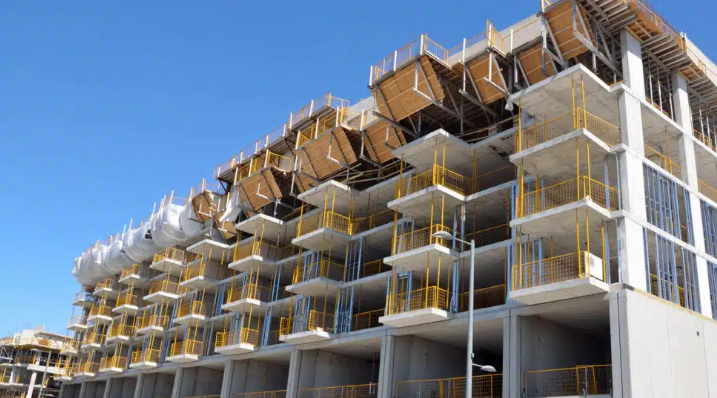Bridging the Gap: Engineering Research in Affordable Housing
Affordable housing is a critical global challenge, as millions of people struggle to find safe, comfortable, and reasonably priced homes. Urbanization, population growth, and rising construction costs have exacerbated the housing crisis, creating a pressing need for innovative solutions. Engineering research is playing a pivotal role in addressing this issue, introducing new materials, technologies, and methodologies to create sustainable, cost-effective housing options.
This article explores the transformative impact of engineering research on affordable housing, emphasizing innovative techniques, sustainable solutions, and future possibilities.
The Importance of Affordable Housing
Access to affordable housing is more than just a fundamental human right—it’s a cornerstone of economic stability, community development, and social well-being. Without affordable housing, families face financial stress, children lack a stable environment for education, and local economies suffer due to reduced consumer spending. Yet, creating affordable homes is a complex challenge, requiring the coordination of resources, technology, and policies.
Engineering research bridges this gap by exploring ways to lower construction costs, improve efficiency, and enhance the longevity of housing structures while maintaining sustainability and quality.
Innovative Materials for Cost-Effective Construction
One of the most significant contributions of engineering research is the development of innovative building materials. These materials are designed to reduce costs while maintaining durability and performance.
- Eco-Friendly Concrete Alternatives
Traditional concrete is expensive and has a high environmental impact. Researchers are exploring eco-friendly alternatives, such as geopolymer concrete, which uses industrial by-products like fly ash and slag. These alternatives reduce costs and greenhouse gas emissions, making them ideal for affordable housing projects. - Engineered Wood and Bamboo
Engineered wood products, such as cross-laminated timber (CLT), offer strength, versatility, and sustainability. Similarly, bamboo, an abundant and renewable resource, is gaining popularity as a cost-effective material for housing in tropical regions. - Recycled and Upcycled Materials
Using recycled materials, such as reclaimed bricks, plastics, and steel, significantly lowers construction costs. Upcycling waste materials into functional building components also supports circular economy principles.
Advanced Construction Technologies
Engineering research has also introduced groundbreaking technologies that revolutionize the construction process, making it faster, cheaper, and more efficient.
- 3D Printing for Housing
3D printing technology has the potential to redefine affordable housing by enabling the rapid construction of homes with minimal labor. Using concrete and other printable materials, 3D-printed houses can be built in days, significantly reducing costs. - Modular Construction
Modular construction involves prefabricating building components in a controlled factory setting and assembling them on-site. This approach minimizes construction time and waste while allowing for scalability and customization. - Automation and Robotics
Automated construction processes, such as robotic bricklaying and automated welding, enhance precision and reduce human labor costs. These technologies streamline workflows and improve project timelines.
Sustainable Solutions for Long-Term Affordability
Affordable housing must also be sustainable, ensuring minimal environmental impact while providing long-term benefits to occupants. Engineering research focuses on integrating energy efficiency and green technologies into housing designs.
- Energy-Efficient Building Designs
Passive design strategies, such as optimizing natural lighting and ventilation, reduce energy consumption. Solar panels and energy-efficient appliances further lower utility costs for residents. - Water Management Systems
Sustainable water management systems, including rainwater harvesting and greywater recycling, ensure efficient water use. These systems are especially beneficial in water-scarce regions. - Insulation and Thermal Performance
Advanced insulation materials, such as aerogels and phase-change materials, improve thermal performance, reducing heating and cooling costs for homeowners.
Challenges in Implementing Affordable Housing Solutions
Despite the progress in engineering research, several challenges remain in implementing affordable housing solutions.
- High Initial Investment
Many innovative materials and technologies require significant upfront investment, which can deter adoption, especially in low-income regions. - Regulatory Barriers
Outdated building codes and zoning laws often limit the use of new technologies and materials. Streamlining regulations is essential to encourage innovation in affordable housing. - Scalability and Accessibility
Ensuring that affordable housing solutions can be scaled to meet demand and are accessible to underserved communities is a major challenge. Collaboration between governments, private sectors, and non-profits is crucial to addressing this issue.
Future Prospects for Engineering in Affordable Housing
The future of affordable housing lies in continued innovation and collaboration. Emerging technologies, such as AI-driven design tools and smart building systems, are set to revolutionize housing construction. By leveraging big data, engineers can optimize designs for cost, efficiency, and sustainability.
Additionally, global efforts to create housing partnerships and share best practices will accelerate progress. Governments, academic institutions, and private organizations must work together to make affordable housing a reality for all.
Conclusion: Building a Better Tomorrow
Engineering research is at the forefront of addressing the global affordable housing crisis. By developing innovative materials, leveraging advanced construction technologies, and promoting sustainable practices, researchers are bridging the gap between demand and supply. While challenges remain, the collaborative efforts of engineers, policymakers, and industry leaders are paving the way for a future where safe, affordable housing is accessible to all.
The promise of affordable housing is not just about shelter—it’s about creating a foundation for thriving communities and a better quality of life for millions around the world.

Also Read :
- Revolutionizing Agricultural Engineering with Robotics
- Exploring New Materials for Space Exploration: An Engineering Perspective
- Hydrogen Fuel Cells: Engineering Cleaner Energy Systems
- The Impact of 3D Printing on Biomedical Engineering
- Autonomous Vehicles: The Engineering Challenges and Innovations
